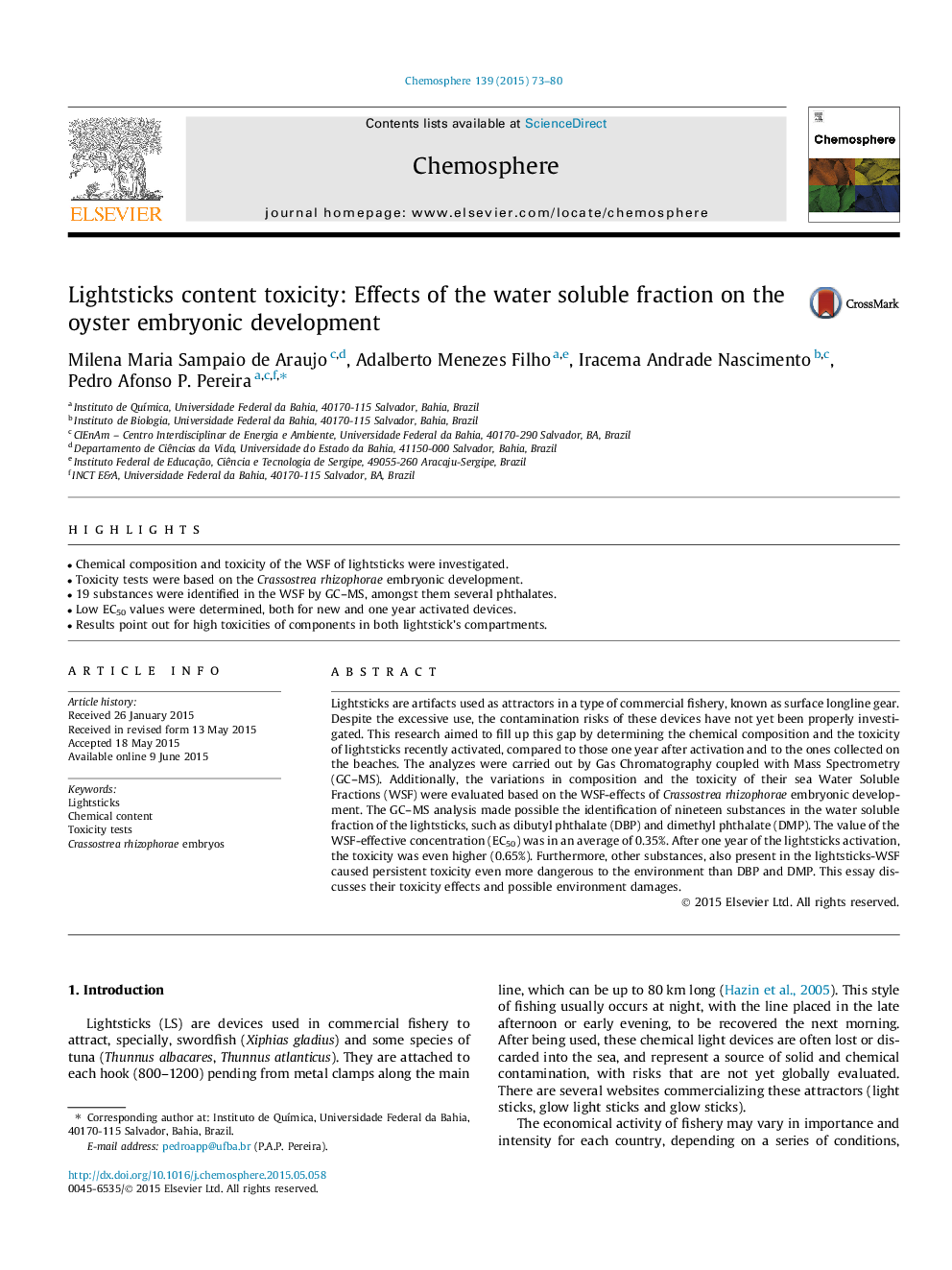| Article ID | Journal | Published Year | Pages | File Type |
|---|---|---|---|---|
| 4408133 | Chemosphere | 2015 | 8 Pages |
•Chemical composition and toxicity of the WSF of lightsticks were investigated.•Toxicity tests were based on the Crassostrea rhizophorae embryonic development.•19 substances were identified in the WSF by GC–MS, amongst them several phthalates.•Low EC50 values were determined, both for new and one year activated devices.•Results point out for high toxicities of components in both lightstick’s compartments.
Lightsticks are artifacts used as attractors in a type of commercial fishery, known as surface longline gear. Despite the excessive use, the contamination risks of these devices have not yet been properly investigated. This research aimed to fill up this gap by determining the chemical composition and the toxicity of lightsticks recently activated, compared to those one year after activation and to the ones collected on the beaches. The analyzes were carried out by Gas Chromatography coupled with Mass Spectrometry (GC–MS). Additionally, the variations in composition and the toxicity of their sea Water Soluble Fractions (WSF) were evaluated based on the WSF-effects of Crassostrea rhizophorae embryonic development. The GC–MS analysis made possible the identification of nineteen substances in the water soluble fraction of the lightsticks, such as dibutyl phthalate (DBP) and dimethyl phthalate (DMP). The value of the WSF-effective concentration (EC50) was in an average of 0.35%. After one year of the lightsticks activation, the toxicity was even higher (0.65%). Furthermore, other substances, also present in the lightsticks-WSF caused persistent toxicity even more dangerous to the environment than DBP and DMP. This essay discusses their toxicity effects and possible environment damages.
